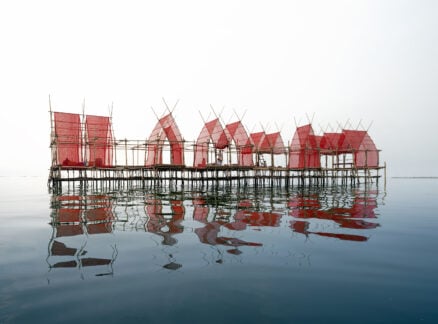March 1, 2003
Norwegian Wood
A new firm boosts Norway’s design reputation, starting with a classic chair.
While the phrase “Scandinavian design” evokes images of iconic objects from most of the Nordic countries—Arne Jacobsen’s Ant chair (Denmark), Alvar Aalto’s molded birch tea trolley (Finland), mass-produced Modernism by retail giant Ikea (Sweden)—those words have never brought to mind furniture from Norway. So when Pål Lunder launched a new Norwegian furniture company called Fjord Fiesta last year, he did it—at least in part—with the intention of raising his nation’s design profile.
“I think Norway has had some good designers and products, but we haven’t had any good producers or labels,” says 32-year-old Lunder, who cofounded the company with partner Simen Engelstad. “Arne Jacobsen was a very good designer, but he had Fritz Hansen, an excellent manufacturer, to help him.”
The ultimate plan for Fjord Fiesta—which in November opened a showroom in Grünerløkke, Oslo’s hipster enclave—is to produce work by young Norwegian designers like the up-and-coming Norway Says collective. But for its first project the firm has chosen to put back into production an underappreciated midcentury design, the Scandia chair by Hans Brattrud.
Available in lounge and dining versions, the chair pairs a laminated wood seat with a solid steel-bolt base. Brattrud designed the Scandia in 1957 while studying architecture at the National College of Art and Design, in Oslo. But it wasn’t until he attended a furniture exposition in Denmark the following year that he encountered the laminated-wood technique developed by Aalto some three decades earlier. “It was the first time this method was used for furniture in Norway,” Brattrud says. “We had a lot of technical problems, like getting the glue to harden properly.” By 1960 the kinks had been worked out, and between 30,000 and 40,000 of the chairs were produced by a Norwegian manufacturer before production stopped in the early 1970s, according to Brattrud.
“I was in school”—at Brattrud’s alma mater—“and visited the factory that had originally manufactured the chair,” Lunder says. “I had never seen it before. Later on I saw it in some international magazines, and I realized that it was a classic Scandinavian design.” Lunder tracked down Brattrud—who had retired from furniture design in the early 1960s to make prefabricated houses—to inquire about licensing the Scandia design, but was surprised to learn that he was in negotiations for the chair with Ikea. “I told him I didn’t think this was an Ikea product because a classic chair needs more attention and care,” Lunder says. In the end Brattrud agreed: when he and Ikea weren’t able to reach an acceptable agreement, the rights were offered to Fjord Fiesta.
The reproduced Scandia comes in laminated walnut with a matte chrome base; the laminate is being supplied by Hove, the factory that originally built the chair. Last winter the chair traveled to the United States along with furniture by Norway Says for exhibitions in Washington, D.C.’s Union Station and the Totem gallery in New York. As one would expect, Brattrud—who is now 69 years old and in semiretirement—is extremely pleased about the Scandia’s second life. “It’s great,” he says. “Just splendid.”





